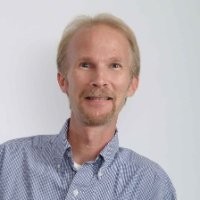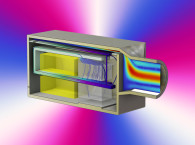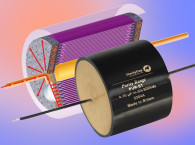There are many diffusers out there from which to choose. I have designed and tested many for my company, AV RoomService, for Kinetics Noise Control, and for Owens Corning. I was, many years back, part of the Audio Engineering Society (AES) SC-04-02 committee, developing standards for acoustical testing of diffusion in labs.
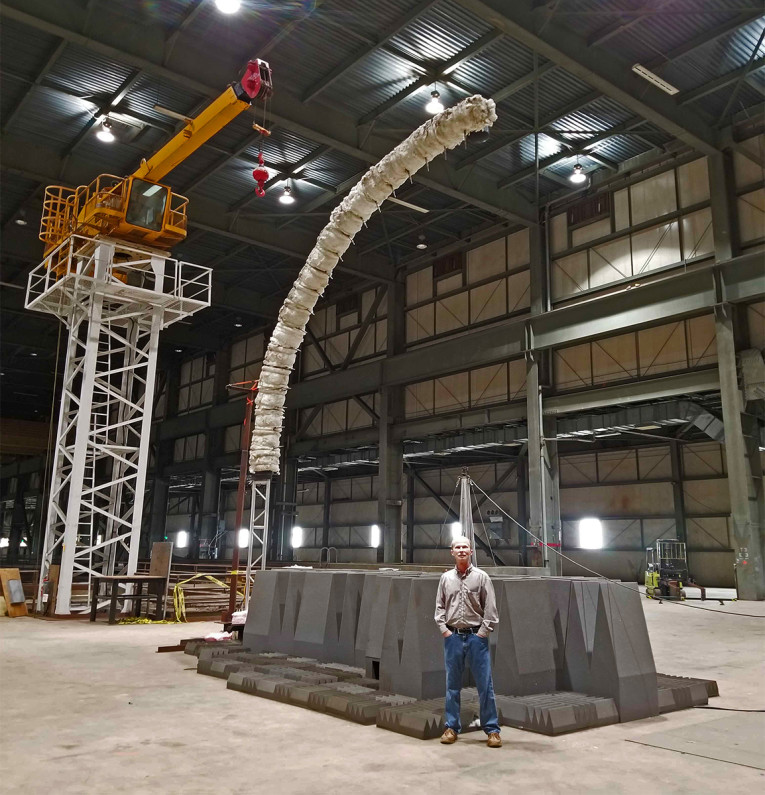
I have learned quite a bit over the years. Probably the most significant takeaway is that diffusion is misapplied by end-users more often than not, therefore, not performing as designed. In developing our new PolyFlex diffuser, our goal was to offer an affordable product that would be applicable for many situations, rather than being specific and therefore limited.
Most diffusers are limited in their applicable bandwidth, effective angles, effective receiver distance, and so forth. Most diffusers are difficult and expensive to make or manufacture. Many are heavy and/or require a lot of real estate. Many of the DIY number theory diffusers end up worthless due to lack of precision in design and/or build.
So how are diffusers wrongly being used so often?
- They are located in the room where they offer little to no effect for the oncoming sound waves.
- They are located in the room where they offer little to no effect for the listener.
- They are often physically too small to be perceived as valuable.
- They are not designed or built correctly.
- The acoustic data is misrepresented.
To begin, let’s discuss some of the types of diffusers and their limits. There are geometric-shaped diffusers (e.g., pyramidal, polycylindrical, etc.), and then there are the number-theory diffusers (e.g., primitive root, maximum length sequence, and quadratic residue, such as well and skyline type, etc.). The problems with the cool-looking number theory type of diffusers are where most all of the problems with application arise.
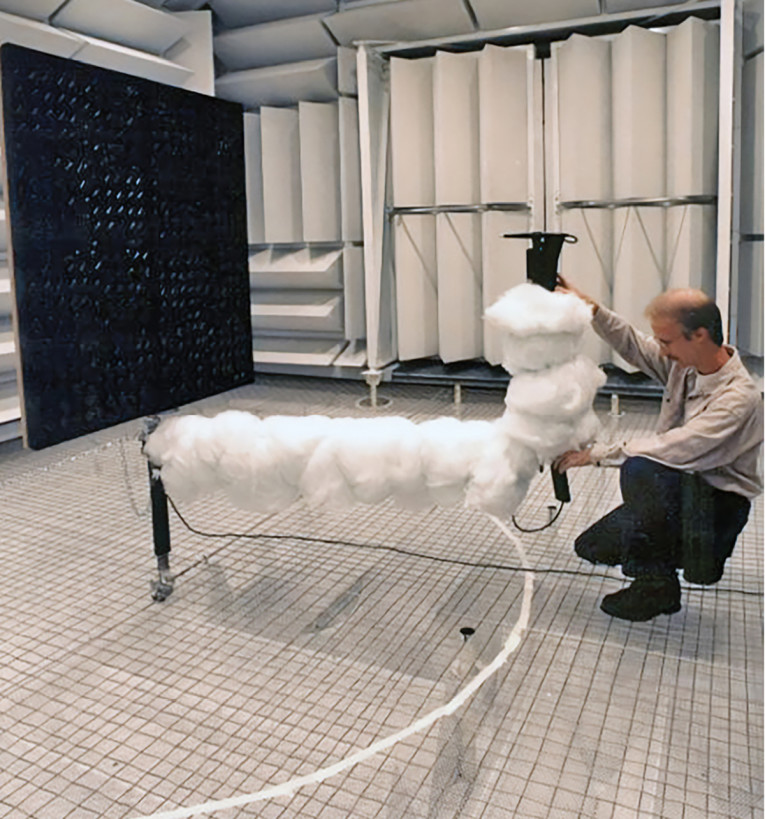
Wavelength Versus Diffuser Size — Does Size Matter?
Size completely matters! Most people don’t realize that the size of the diffuser is directly associated with the frequencies it can affect, and what that means. It means that most of the diffusers you encounter for small rooms are only affecting high frequencies. They are likely only affecting maybe the top two octaves on the piano and higher. Be sure to check the manufacturer’s spec sheet, including how the test was conducted, which we will discuss.
Let’s look at sound wave lengths versus a simple pyramidal diffuser that is one foot square in size.
Note that at low and midrange frequencies, the diffuser is not seen by the sound wave because it is too small compared to the wavelength of the sound wave. At about 1kHz, it does a nice job of scattering. But then at about 10kHz, it behaves speculary again (angle of incidence equals angle of reflection). In order to affect lower frequencies, the diffusers must be proportionally large enough to be of influence to the size of the wave. They become unruly very fast. They may even become architectural elements of the room construction design, rather than add-on elements to the room’s existing interior.

Diffuser/Listener Geometry
Remember that the higher the frequency, the more directional it is and the smaller the wavelength. Think about how many diffusers, especially number-theory (well or skyline) type diffusers, may cast a shadow upon themselves if the sound source and/or listener is off axis. Such diffusers work best behind the listener where the sound incidence and receiver are at normal or zero degrees. They will likely offer little to nothing located anywhere else. In addition, number type diffusers require a distance to the listener before diffusion is effective.
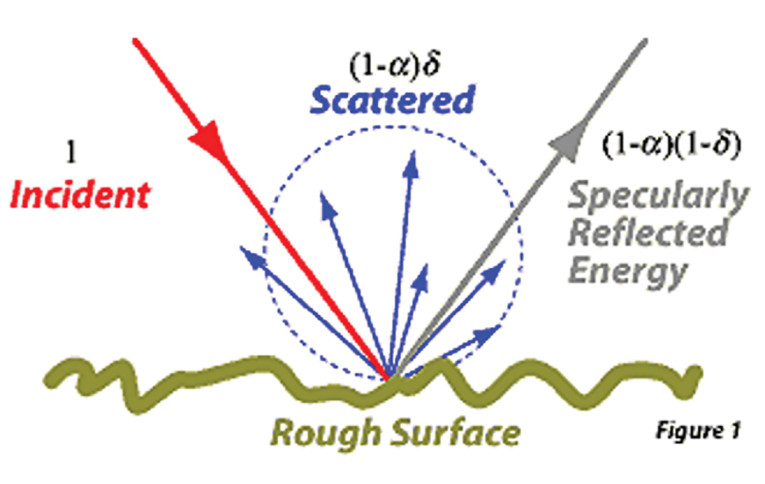
Materials Testing: Diffusion and Scattering
Before we discuss scattering and diffusion we need to understand how the terms are defined in the standards that are used to measure them. Specular reflections are those where the angle of the reflection is always equal to the angle of incidence of the source energy. This is known as Snell’s Law.
Scattered energy is defined as the energy left over after subtracting specular energy loss from total energy loss. Scattering is a measurement of random surface roughness, not structured or large-scale reflectors. The definition removes all surfaces that have a structural depth exceeding 1/16 of the sample size or surface size. Examples would be large geometric reflectors (e.g., pyramidals, cylindricals, etc.), where the constructs are made up of surfaces that have large specular reflection surfaces, and are exempt from this definition.
What Is the “Scattering Coefficient”?
The “Scattering Coefficient” is a parameter that is very much like the “Absorption Coefficient.” It describes the loss of energy in a total energy field and is defined as the resultant of subtracting the specular reflected energy from the total reflected energy. The energy loss is then divided by the area of the sample and becomes a “coefficient.”
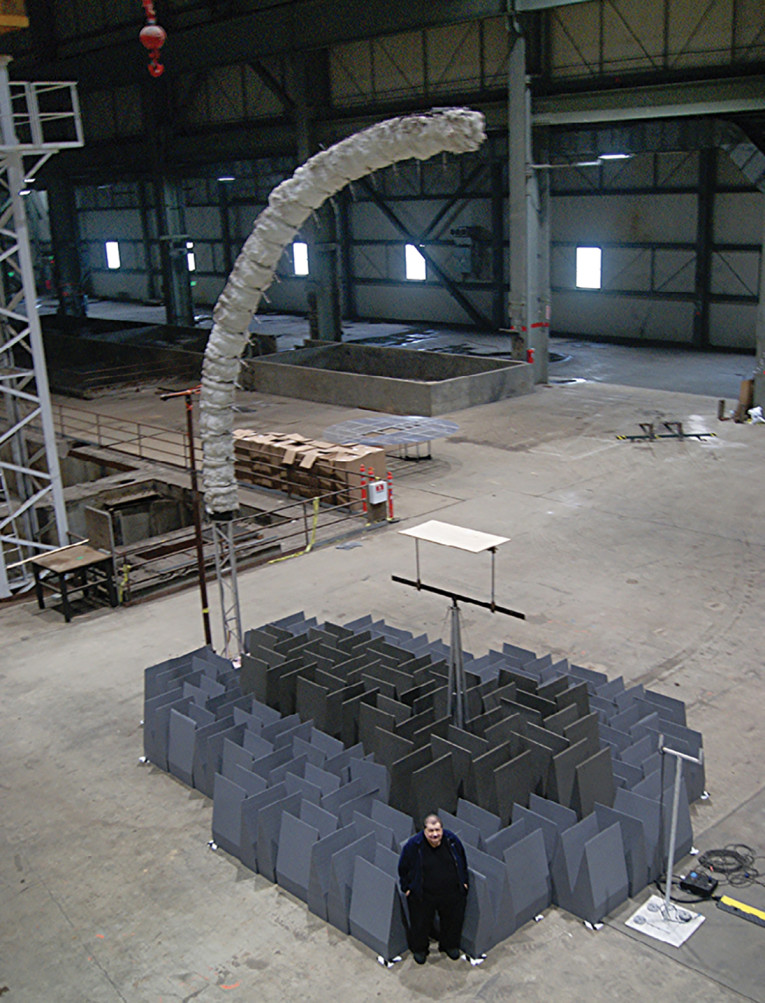
How Is the “Scattering Coefficient” Used?
Simulation programs used for architectural acoustics use coefficients to statistically calculate sound energy left in a room after a defined period of time. Up until the last few years, the programs used only absorption coefficients to calculate the total absorption of energy in a room. Lately there has been an effort to include “scattering” in the calculations to simulate the loss of energy as well as the randomizing of reflections from the surfaces of the “room.” The absorption parameter is used to calculate the reduction of energy in the room. Scattering can also be used to do the same thing but is also used to indicate the percentage of energy that is randomly reflected back into the room versus the energy reflected in a specular way.
Absorption had well known test procedures that were later standardized to create the parameter, “absorption coefficient,” but scattering coefficients were inserted into the programs and “tweaked” by users based on “experience.” This method was better than nothing as long as measurements were not available and standards had not been developed. This ended with the adoption of ISO-17497-1.
The standard, ISO 17497-1, was developed in Europe. It was based, primarily, on research conducted by Michael Vorländer, Institute of Technical Acoustics, and Eckard Mommertz, Müller-BBM GmbH, using a free-field method. This was later converted to a method that used a reverberation room instead. Initially all research and measurements were done using scale models of the scattering surface. NWAA Labs was the first research and testing facility to develop a “FULL SCALE” method to perform scattering tests. There were numerous initial problems converting the scale model method to full scale, but Ron Sauro made breakthroughs developing “corrected” procedures to get consistent and repeatable measurements of the full scale samples.
Customers came to NWAA for full-scale measurements, and using reverberation rooms of medium volume, results were obtained. Many customers did not really understand the data, but accepted it. Even though NWAA Labs normally uses the standard test procedures described for testing, Ron Sauro is constantly trying to improve or create better ways of measuring relevant acoustic parameters.
After moving the laboratory from California to the present location in Elma, WA, Sauro set up the same exact system in the much larger facilities intended to measure low frequencies in a more accurate way. They installed the identical equipment, software, and procedures and the same samples in the new facilities and proceeded to run the exact same tests.
They had already qualified the new reverberation rooms using ASTM and ISO standards. The results from the new tests did not confirm the tests previously performed at the other facility. They performed the tests again and again, and each time the data returned was completely random. This forced Sauro to go back into a research mode and find out why he was not able to get answers that matched the previous data.

They built another reverberation room (temporary) of the same volume as the old testing facility. The equipment and samples were then reinstalled and the testing was done again. The answers came back close to the original data. The difference was the size of the reverberation room! The difference was that larger rooms were more diffuse than the smaller reverberation room. This pointed to an error in the current standard, the assumption of diffusivity in the smaller rooms.
A truly diffuse room has an energy field that has a fully “mixed” energy magnitude, and energy phase, everywhere in the room (away from the boundaries).
The idea of comparing phase differences to remove energy from the energy field cannot be accomplished when you cannot have differences in phase responses from different impulse responses in a fully “mixed” phase field. You can detect differences in a free field but not in a truly diffuse field. This means the “standard” for measuring scattering cannot operate the way it was described and can only operate in a non diffuse field. As a full scale measuring standard, it is not a useable way to measure this parameter.
Ron Sauro has developed a new testing regime for diffusion testing that provides full 360-degree balloon data as well as polar, frequency response, phase response, and magnitude data. This regime is now the basis for a new standard being developed by ASTM for the testing of diffusion.
How to provide a useable parameter to work inside of simulation programs is the problem. The solution was to look into the past and adapt what we already know. ASTM started looking, with guidance from Sauro, into what the function of “diffusion” panels and structures are. Sauro thought that diffusers perform exactly the same task as speakers do. They take energy from a source and radiate this energy into the room with a directivity function.
Speakers provide their own energy in using a voice coil to convert electrical energy to acoustic energy and using the cone or horn to “direct” the energy. Diffusers do the same thing using reflected energy. How do we use this information in the simulation programs? We provide “directivity balloons” at each one-third octave frequency from 100Hz to 10kHz at each 5-degree resolution (19 calibrated microphones on an arc) around the front of the speaker, for in wall speakers. We can provide the same “reflection balloon” for various reflection devices? Enter the development of a new standard!
Developing a New Standard at ASTM on Surface Reflectivity
Sauro had measured speakers for many years using the AES-156 standard. This standard developed a directivity balloon of the sound radiation in 5-degree increments using a matrix of a 360-degree by 360-degree balloon matrix. A complimentary section of the standard allowed a 180-degree by 360-degree measurement of an in-wall mounting of a speaker. This results in a hemisphere of the front-facing half of a directivity balloon being shown.
This allowed the use of speakers in simulation programs for acousticians, such as EASE, Odeon and CATT Acoustics. Sauro thought this might be a great way of including reflectors and diffusers in the simulation programs, as well. The question was how to provide a signal to be measured from these reflectors! Speakers have a voice coil to convert an electrical signal to acoustic energy by moving a diaphragm. This makes the air compress and decompress to move the eardrum. Reflectors do not have self-contained “voice coils.” They are intended to “reflect” energy already present in the “room.”
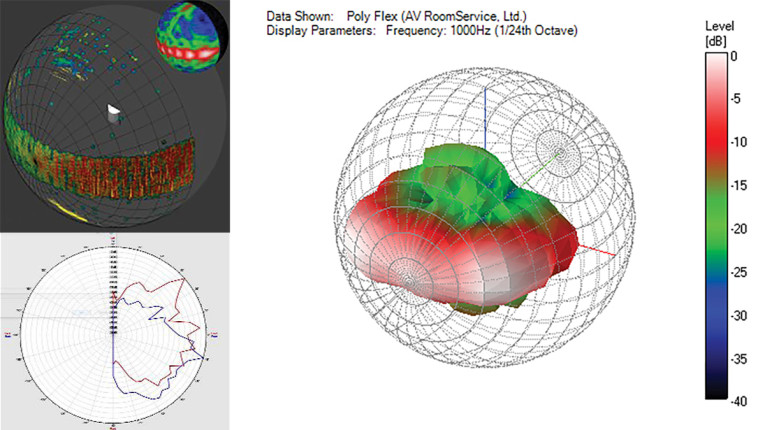
In ISO-17497-2, a source was proposed outboard of the measuring system so that the direct sound can be “windowed” out of the Impulse response. This results in the measurement of first-order reflections from the “diffuser” or DUT.
These windowed IPs can then be used to construct attenuation balloons similar to speaker balloons that can be used just like speakers in the simulations programs. With such proven testing means more confident modeling programs, and therefore better designed diffusers.
Going back to our design criteria for best-bang-for-the-buck, we selected the polycylindrical shape with an opened end, and made it flexible. This meant the PolyFlex diffuser offered the following attributes:
- Wide bandwidth (630Hz on up)
- Wide effective receive and return propagation angles (150 degrees)
- No receiver distance requirement (no convergence point)
- No temporal time (phase) skewing
- Tunable frequency and propagation to prevent lobing
- Can act as an absorber too by adding material behind
- Can be oriented for either vertical or horizontal scattering
The PolyFlex diffuser is a 1D diffuser, meaning it will scatter either horizontally or vertically, depending on orientation. It is available in a 100% clear acrylic or a neutral grey metal. They can be placed behind stretch-fabric systems or painted.
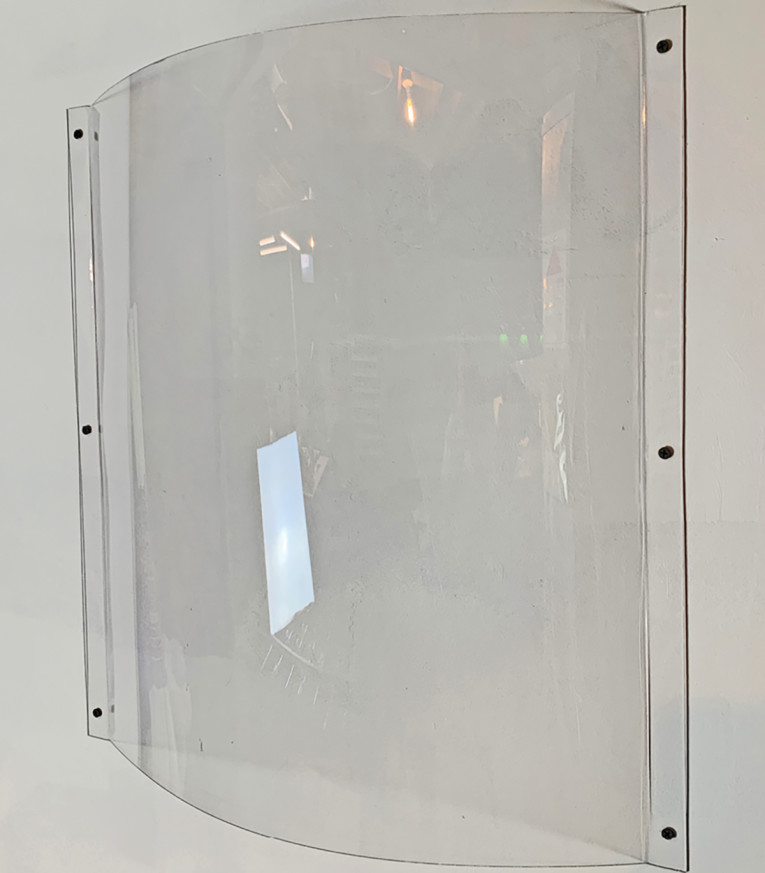
PolyFlex diffusers can add sonic spaciousness to the room, air around the instruments, improve timbre accuracy and/or widen the soundstage. They also improve clarity in speech and spatial focus without making the room sound dead and/or small. PolyFlex diffusers can also be used at reflection points in place of typical absorbers when room reverberation times are already low. Once the reverberation times of the room are under control, it would be very difficult to have too much diffusion added to the room. We feel that the PolyFlex met our design criterias in spades! aX
Author’s Note: I would like to thank Ron Sauro for his insight and work, which has provided the advancement of diffusion understanding, testing, and design for all to benefit.
Resources
AV RoomService, Ltd., www.avroomservice.com
M. Vorländer and E. Mommertz, “Definition and Measurement of Random-Incidence Scattering Coefficients,” SCRIBD,
www.scribd.com/document/111726956/Vorlaender-Mommertz-Scattering
This article was originally published in audioXpress, August 2022.
 About the Author
About the AuthorNorman Varney is the principal consultant for AV RoomService, Ltd., established in 2001. During that time, Norman was also Acoustical Product Development Manager for Kinetics Noise Control, and prior to AVRS, was with Owens Corning at the Science & Technology Center, where he was a Senior Engineer with the Acoustic Systems Business as the Acoustic Design Center Lead. Prior to Owens Corning, he worked at Music Interface Technologies where he designed critical listening and viewing environments, AC line conditioners, video cables, and was Director of the Custom Installation and Home Theater divisions. While there, he designed the very innovative and elaborate electrical system for the Scoring Stage of Lucas Film’s Skywalker Ranch and was the lead for the 2C3D and 5C3D Certification Programs. Before that, Norman owned Alta Buena Stereo, a retail store in California for 12 years. He has designed more than 500 critical listening rooms around the world and is an active member of American Society for Testing and Materials (Committee E-33 on Environmental Acoustics), Acoustic Society of America, Institute of Noise Control Engineering, Audio Engineering Society (sub committee AES-4id-2001 for establishing diffusion coefficient standards), National Association of Music Merchants, Custom Electronic Design and Installation Association, and others. He has written and presented white papers for the industry and continues to have articles published around the world.




